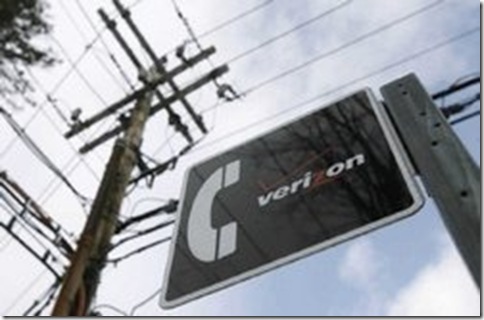Dave Burstein at DSL Prime reports that Ivan Seidenberg effectively says the the wireline voice telecom business is dying:
“we have to pivot and make a shift from the voice business to the data business and eventually to the video business. … we must really position ourselves to be an extremely potent video-centric asset.” He further states, “The issue there is perhaps it is like the dog chasing the bus a little bit. So what I need to do is get ourselves focused around the following idea, that video is going to be the core product in the fixed line business. … I shed myself of the burden of chasing the inflection point in access lines and say I don’t care about that anymore.”
Despite Seidenberg having been one of the few telecom industry visionaries to truly embrace data/video as the future of the industry as long as 10 years ago, it still sounds strange (heretical, in fact) to hear a telecom CEO say “I don’t care about that [access lines] anymore.” On the other hand, I believe Seidenberg is correct in focusing Verizon’s strategy on the combined communications capabilities of its wired and wireless footprints.
Googling for further insights from Seidenberg’s comments at Goldman Sachs Communicopia Conference, I found this statement, made a week earlier at SuperComm:
“But here is what is happening in our view,” Seidenberg said. “The Internet, the PC and the TV are integrating at the fastest rate you can possibly imagine. So this is not a matter of only putting video on mobile; that will happen. We are also talking about turning the TV into an interactive device. And the experience we have had with that is just off the charts. So we have this Widget Bazaar on FiOS, which is kind of like our apps store. And so in addition to getting the weather and the news and that kind of stuff, traffic, now you can do your Twitter, your Facebook, your YouTube, you’ve got a Kodak Gallery, you have got fantasy football, you have got the RedZone ticket and there probably are 50 other things we have in negotiations right now to take the interactive capability of the TV and turn it into a hilarious issue.”
Next up, Seidenberg said, is the likelihood that a mobile smartphone interacts with the TV, as part of the convergence process. That’s why, he said, Verizon is focused on having fewer total access lines but hosting them on a “much higher potency platform to take to the customer.”
Unlike Ed Whitaker and Duane Ackerman, Seidenberg truly grasps the converged future of communication networks, and more importantly, is willing to act upon that vision. In addition to developing the platform to focus on the common interactive experiences to be encountered on mobile, video and computer devices, Seidenberg is also focused on the operating efficiencies to be found in the flat architecture of the fiber network. According to the New York Times in its article titled “Verizon Hangs Up on Landline Phone Business”:
By converting most of its landline operation to FiOS, Mr. Seidenberg said Verizon had a new opportunity to cut costs sharply. FiOS uses the decentralized structure of the Internet rather than the traditional design of phone systems, which route all traffic through a tree of regional, then local offices.
“We don’t look any different than Google,” he said. “We can begin to look at eliminating central offices, call centers and garages.”
Mr. Seidenberg said that he was just beginning to work through the implications of this and that he planned to reorganize the company in order to emphasize this strategy. He told investors it may take a year or two for the financial impact to be apparent.
Plant and operations in the legacy telco network is insanely complex, labor intensive and consequently expensive. An all optical network will prove much cheaper to operate. One of Seidenberg’s challenges probably has been and may continue to be overcoming the copper voice-centric Luddites within his own organization. My guess is that when you see Seidenberg publicly announce the cost savings to be realized via the replacement of the copper with fiber, you will know for certain that he succeeded in that endeavor. Unfortunately, that will mean a lot more people looking for new jobs and careers. Given that many of those are members of the CWA and IBEW, you can also bet those unions will seek to delay that process as long as possible, just as they are also doing in attempting to impede Verizon’s sale of unprofitable rural operations.
